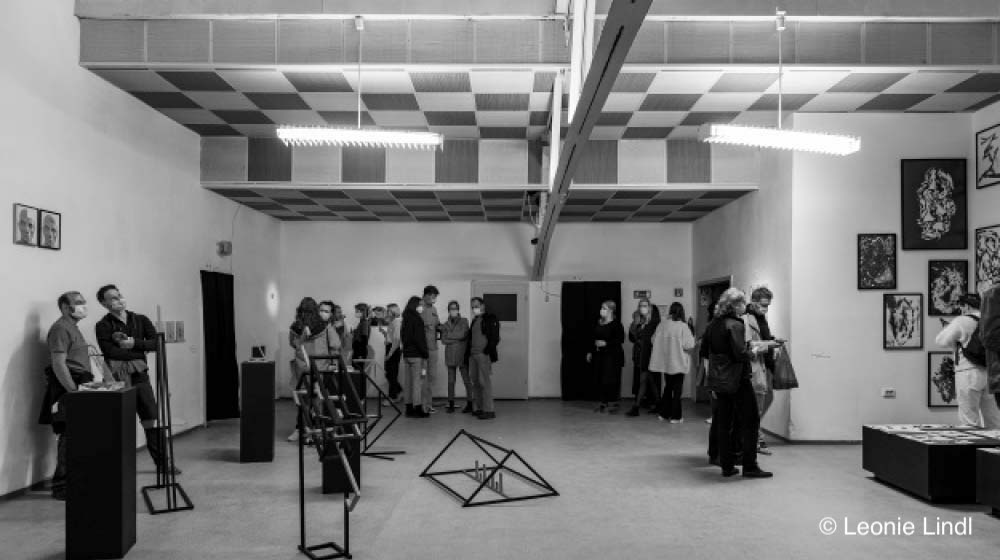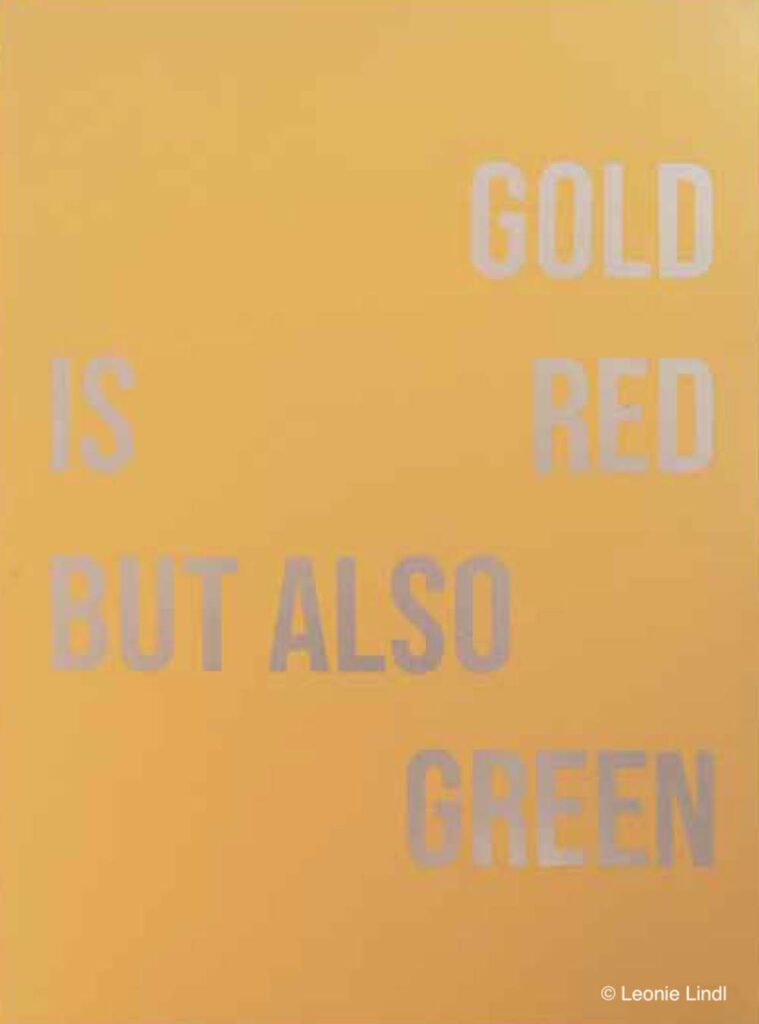- Home
- Research
- Nanobiophotonics
- Research results
- Golden Highlight – Tiny Nanoparticles of Gold Creatively Showcase Science
Golden Highlight – Tiny Nanoparticles of Gold Creatively Showcase Science

18.01.2023
They are only about 80 nanometers in size, and yet they are permanent fixtures in medical diagnostics as well as in food and water analysis: gold nanoparticles. In 2021, the metallic structures became shining actors in an Artist-in-Residence program that shed new light on nanoparticles.
“The history of gold nanoparticles goes far back to the early beginnings of mankind. Historical glass containing gold nanoparticles is already known from Roman times. This ‘ruby red’ glass was used for drinking vessels, for example, or was later used in church windows,” explains Prof. Dr. Wolfgang Fritzsche, head of the Department Nanobiophotonics at Leibniz IPHT, who works intensively on gold nanoparticles. The electrons of the particles are set into oscillation by incident light, which can cause their colors to vary from red to green. The metallic structures are used in the field of bio- analytics to detect, e.g. pathogens, antibiotic resistance, or biomarkers. “If pathogenic germs dock onto the surface of gold nanostructures, the particles change their color. Due to their strong reactivity to light, pathogens can be quickly detected using light-based imaging methods. This principle can also be transferred to other diagnostic applications, such as the detection of tumor cells,” continues Wolfgang Fritzsche.
Aesthetic staging
In 2021, the art project “Entstehung einer künstlerischen Tatsache” (“Emergence of an Artistic Fact”) brought together Jena researchers and creatives from all over the world. Encounter, dialogue, and exchange as well as a look behind the scenes of research provided the art creators with the necessary inspiration for a creative examination by using scientific methods and questions. The Italian-born artist Luca Spano staged the Leibniz IPHT and its research work in five creative 25 x 55-centimeter artworks. In gold on steel, he symbolically combined the institute’s gold particle research with a poetic aspect intended to open up an exciting approach to science for a viewer.
Luca Spano combined the essence of his exploration of the precious metal gold with meaningful phrases such as “Gold is red but also green”. In this way, the artist opens a door to nanobiophotonics: Due to the ability of gold nanoparticles to interact with light, and influenced by their size as well as the direction of the light, different color variations can be created. Gold nanoparticles that absorb light in the green wavelength range, for example, appear red in transmitted light, whereas they appear green when illuminated from the side.

“What the resulting artworks and our research have in common is that we work with numerous image data. However, images are only the first step in understanding physical phenomena, chemical reactions, or biological processes and procedures. In order to decipher them, we have to go beyond the purely visual information and interpret the data as well as derive correlations. Luca Spano also skillfully implements this in his artworks: his art only reveals itself at second glance – only then the whole story is told, and the scientific approach emerges. Seeing our research work creatively staged in this way was extremely exciting and inspiring,” says Wolfgang Fritzsche.
